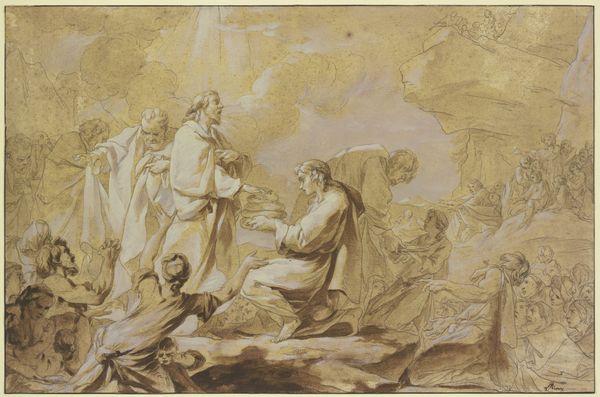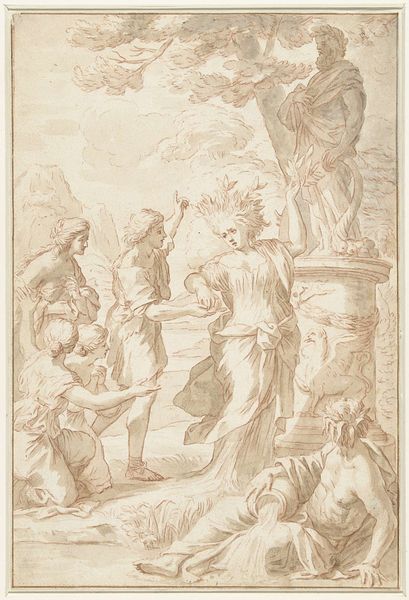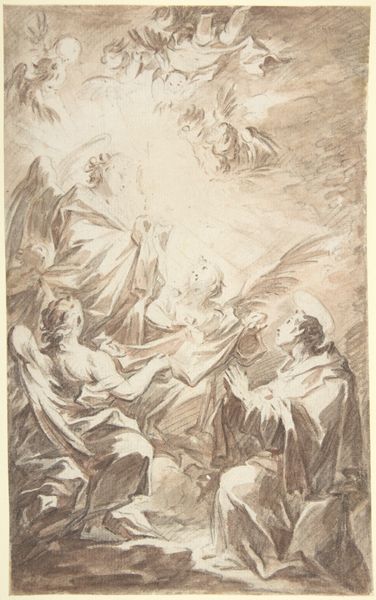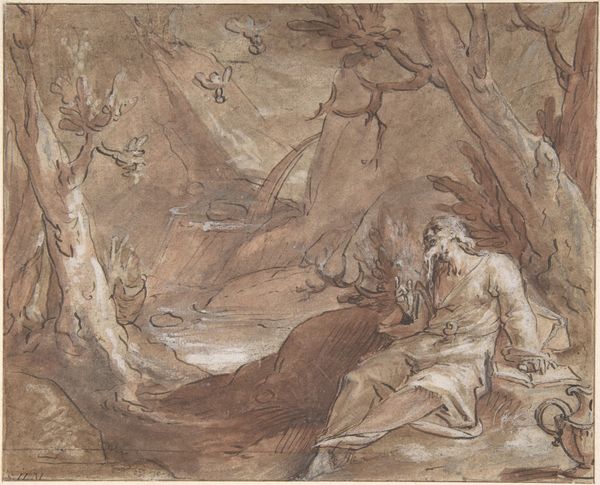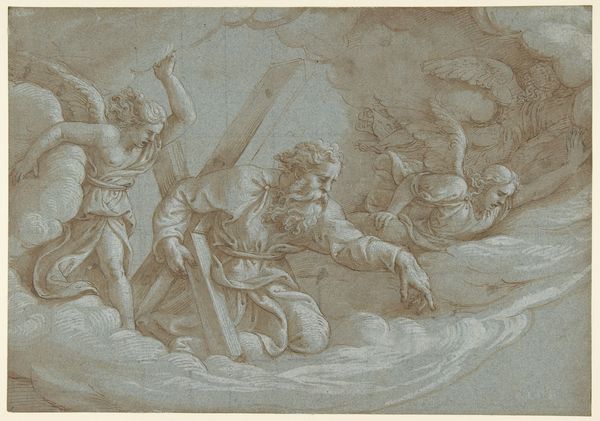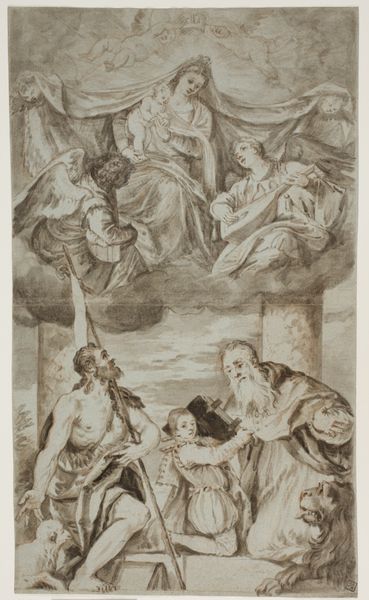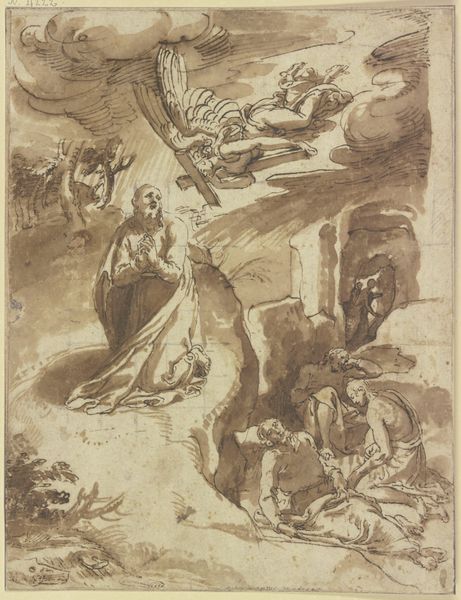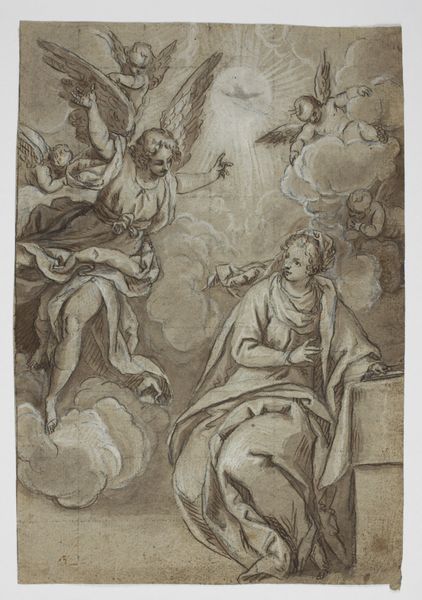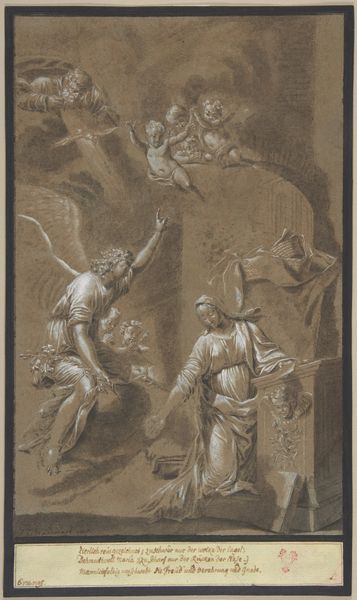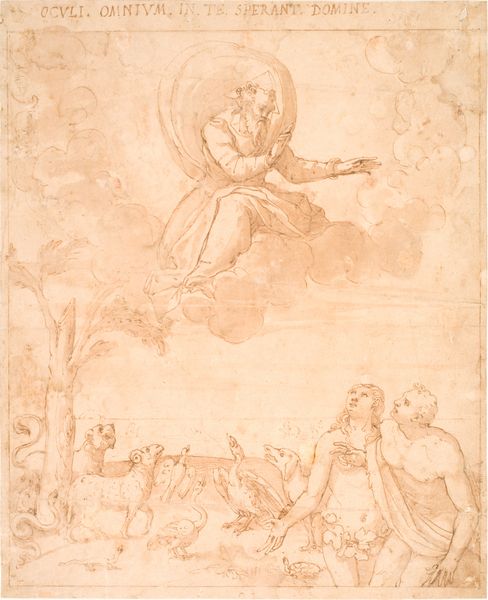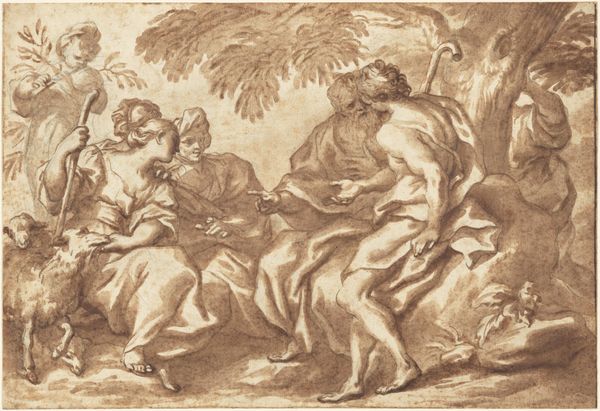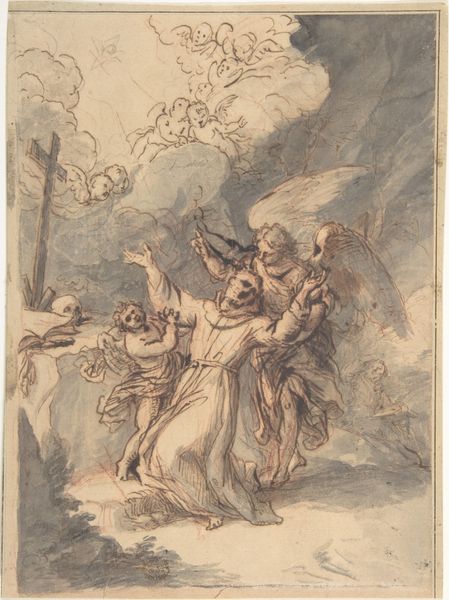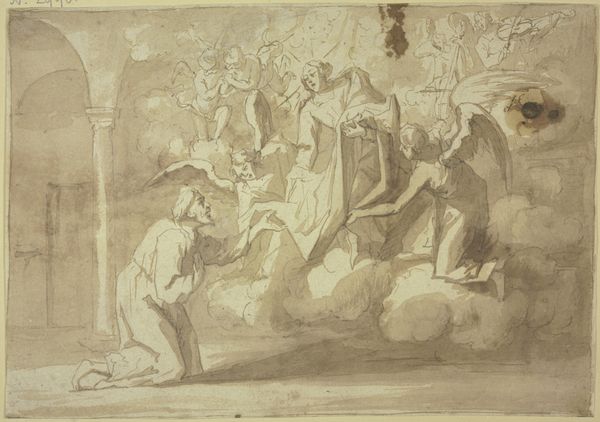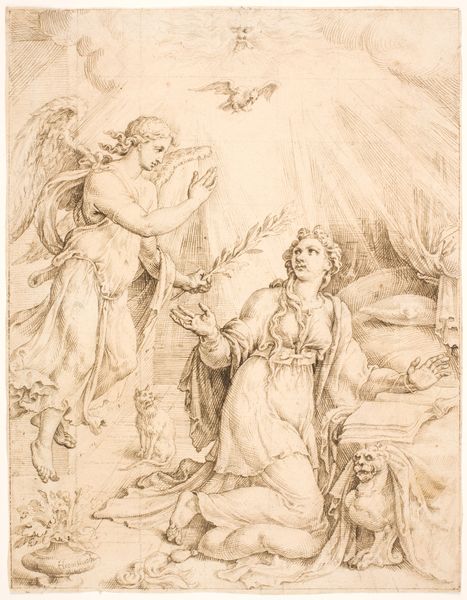
drawing, print, ink
#
drawing
#
baroque
#
ink painting
# print
#
figuration
#
ink
#
history-painting
#
angel
Dimensions: 5 9/16 x 8 11/16 in. (14.1 x 22 cm)
Copyright: Public Domain
Curator: Welcome. Let’s spend a few moments examining "The Annunciation," a work created between 1660 and 1710 by an anonymous artist. It resides here at The Metropolitan Museum of Art. The piece is rendered in ink, a print and drawing depicting a pivotal scene. Editor: It strikes me as surprisingly gentle for such a dramatic biblical moment. The brown ink creates a warm, almost dreamlike quality. There’s a real sense of floating figures and swirling clouds surrounding Mary and the angel Gabriel. Curator: The choice of medium significantly influences the reception of this piece. Printmaking at the time was deeply interwoven with popular culture and religion. Dissemination of biblical scenes through prints helped spread religious ideals across various social strata, solidifying the Church's messages and influence. Editor: Look at how Gabriel offers lilies to Mary. The lilies, of course, symbolize purity and Mary's virginity. It's such a familiar trope within Annunciation scenes. It almost becomes shorthand for the divine's interaction with the human. The downcast gaze represents the moment of profound acceptance but is also emblematic of modesty. Curator: Right, the social conditioning related to women and subservience comes across in similar depictions during the era. Also consider the socio-economic factors driving the demand for such pieces, not just from the church but also individual households desiring devotional aids. Editor: Yes. These details give depth. Also, I notice some cherubs, partially obscured but present in the top right of the artwork; a common symbol that indicates love, innocence, and spiritual guidance. Curator: Absolutely, that combination of accessible materials and enduring symbology meant "The Annunciation" as a narrative had profound cultural staying power. It acted as a powerful teaching aid across centuries. Editor: Reflecting on the cultural and spiritual significance we’ve unearthed truly highlights its timelessness. I see a scene ripe with complex emotion. Curator: For me, understanding its role within societal structures casts new light on its function within popular visual culture and political control.
Comments
No comments
Be the first to comment and join the conversation on the ultimate creative platform.
